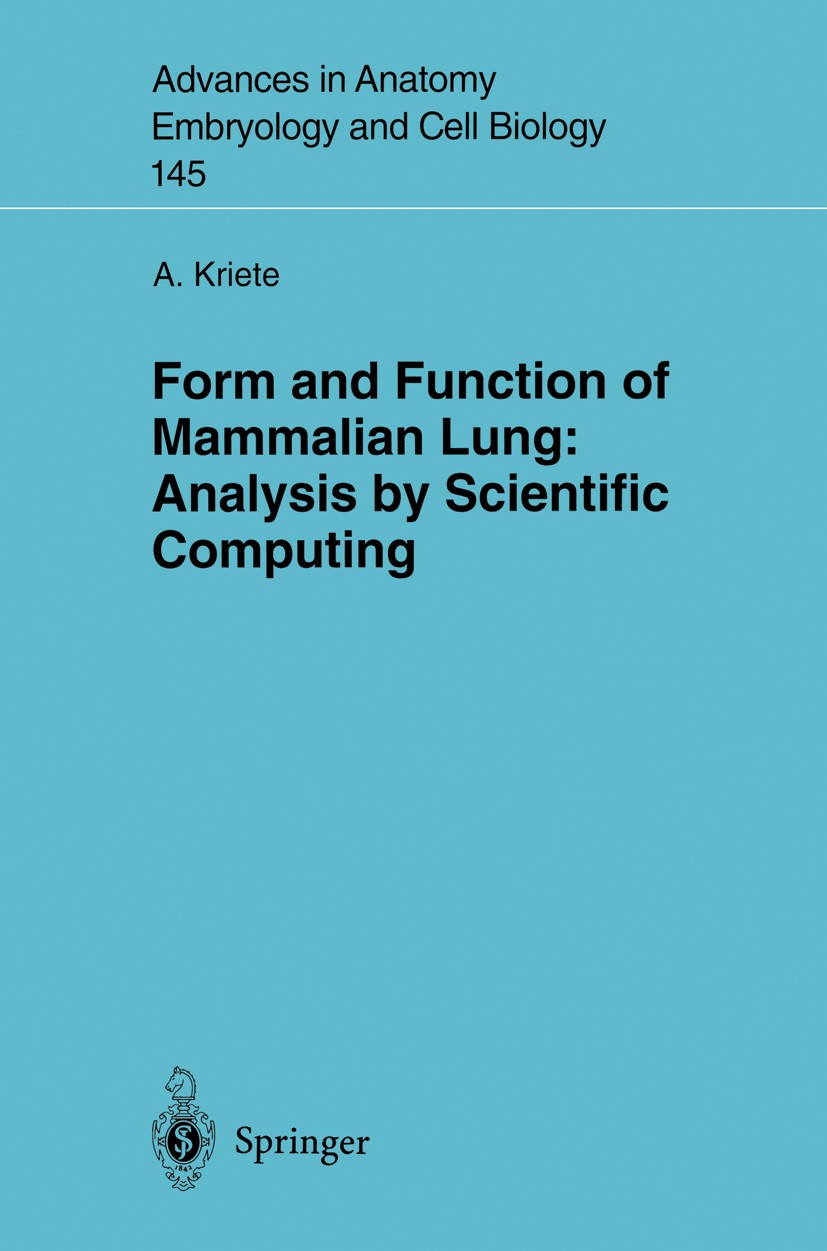| 书目名称 | Form and Function of Mammalian Lung: Analysis by Scientific Computing | | 编辑 | Andres Kriete | | 视频video | http://file.papertrans.cn/346/345614/345614.mp4 | | 丛书名称 | Advances in Anatomy, Embryology and Cell Biology | | 图书封面 |  | | 描述 | 1.1 Overview The precise knowledge of the three-dimensional (3-D) assembly of biological structures is still in its origin. As an example, a widely accepted concept and common belief of the structure of the airway network oflung is that of a regular, dichotomous branching pattern, also known as the trumpet model. This model, first introduced by Weibel in 1963, is often used in clinical and physiological applications. However, if this concept of dichotomy is used to model lung, a shape is obtained that is quite different from a real lung. As a matter of fact, many previous quantitative morphological and stereological investigations of lung did not concentrate on the spatial aspect of lung morphology but delivered data in a more statistical fashion. Accordingly, the functional behavior predicted by such a model becomes questionable and indeed, the morphometrically predicted lung capacity exceeds the physiological required capacity by a factor of 1.3 up to a factor of2. This problem has also been termed a paradox, as discussed by Weibel in 1983. In the rare cases where descriptive models of the mammalian bronchial tree exist, monopodial in small mammals, dichotomous in larger ones, th | | 出版日期 | Book 1998 | | 关键词 | Computer; calculus; computer visualistics; lung model; modeling; pneumology; radiology; visualization | | 版次 | 1 | | doi | https://doi.org/10.1007/978-3-642-72220-2 | | isbn_softcover | 978-3-540-64494-1 | | isbn_ebook | 978-3-642-72220-2Series ISSN 0301-5556 Series E-ISSN 2192-7065 | | issn_series | 0301-5556 | | copyright | The Editor(s) (if applicable) and The Author(s), under exclusive license to Springer-Verlag GmbH, DE |
The information of publication is updating

|
|
 |Archiver|手机版|小黑屋|
派博传思国际
( 京公网安备110108008328)
GMT+8, 2025-8-29 00:14
|Archiver|手机版|小黑屋|
派博传思国际
( 京公网安备110108008328)
GMT+8, 2025-8-29 00:14


